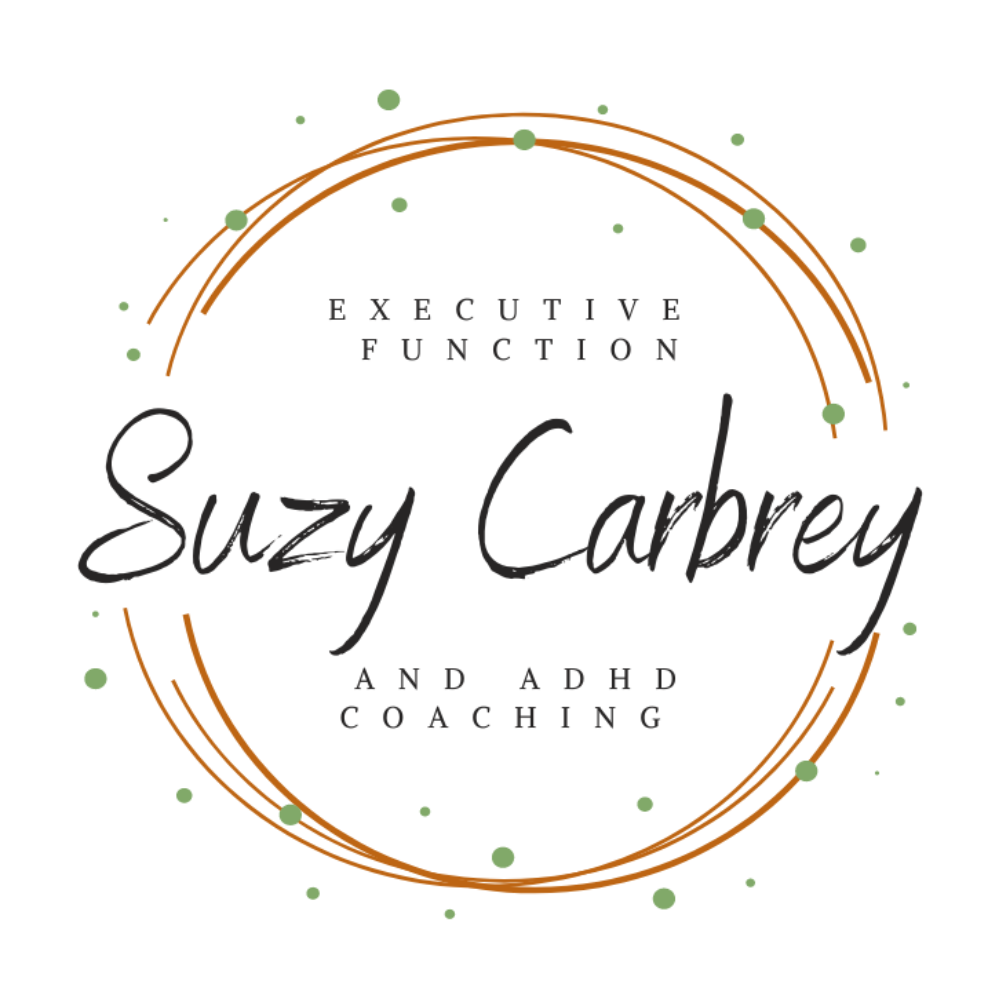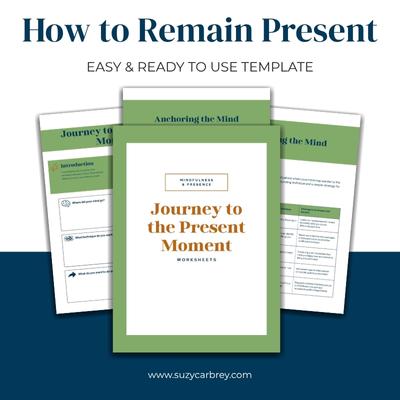In today’s fast-paced world, attention feels like one of the most precious resources we have. Between constant notifications, family responsibilities, work demands, and a never-ending stream of stimulation, staying focused can feel impossible. For people with ADHD or executive functioning challenges, this struggle is magnified. Your brain is already juggling so much, and the external noise only adds to the overwhelm.
But there’s good news: attention is not something we have to leave to chance. We can learn to focus our attention on purpose. And one of the most effective ways to strengthen this ability is through mindfulness.
Mindfulness is more than a buzzword or a suggestion to sit cross-legged in silence for 30 minutes a day. At its core, mindfulness simply means paying attention to the present moment with openness and curiosity. It’s a skill, and like any skill, it can be practiced, stretched, and strengthened over time.
Why Mindfulness Matters for Executive Functioning
Executive functions are the mental processes that help us manage time, tasks, and goals. They’re like the brain’s “air traffic control system.” They allow us to:
- Start what we intend to start
- Shift when something unexpected happens
- Regulate emotions in the moment
- Hold onto details long enough to use them
- Follow through on commitments
When our attention is scattered, executive functioning becomes harder. We forget what we were doing mid-task, procrastinate on important projects, or feel hijacked by emotions. But when we train ourselves to notice what we’re doing, how we’re feeling, and what’s happening around us, we’re strengthening the very foundation of executive functioning.
Mindfulness supports executive functioning in these ways:
- Strengthening attention control: practicing presence helps us notice when our mind has wandered and gently bring it back.
- Improving self-regulation: mindfulness reduces reactivity, so we can pause instead of snapping, procrastinating, or spiraling.
- Building working memory: paying attention on purpose helps us hold onto details long enough to use them.
- Encouraging mental flexibility: noticing our thoughts allows us to shift more easily between tasks and perspectives.
Think of mindfulness as a “reset button” that helps your brain pause long enough to make intentional choices.
Everyday Mindfulness: No Extra Time Required
The biggest misconception about mindfulness is that it requires extra time or a quiet retreat. In reality, you can practice mindfulness right in the middle of your daily rhythms. Everyday activities, ones you’re already doing, become the training ground.

Everyday Mindfulness Examples
- Vacuuming: Instead of zoning out or rushing, notice the sound of the vacuum, the feel of the handle in your hand, and the sight of clean lines forming on the carpet. Pay attention to the rhythm of your movements.
- Dishes: Feel the temperature of the water, notice the slipperiness of soap, listen to the clink of dishes. Rather than thinking of dishes as a chore, use them as a sensory anchor.
- Shower: Pay attention to the sensation of water hitting your skin. Notice the smell of shampoo, the sound of the spray. Instead of rehearsing your to-do list, let your mind rest with the sensory experience.
- Brushing teeth: Slow down and feel the texture of the bristles, the taste of toothpaste, the sensation of foam. Use the two minutes as an intentional pause.
- Conversations: Mindfulness in relationships can be transformative. Focus on the person in front of you, notice their tone, expression, and body language. Catch yourself if your mind drifts to your reply, and gently return to listening.
💡 Reminder:
You don’t need to add new practices. Just change how you do what you already do.
Additional Everyday Situations
- Driving or commuting: Notice the feeling of the steering wheel, the sound of the engine, or the rhythm of footsteps if you walk. Use red lights as reminders to breathe.
- Parenting moments: When your child asks for attention, pause to look at them fully. Notice their face, their tone, their energy. Even 20 seconds of presence creates connection.
- Work tasks: Before opening your email, pause to notice your breath. As you type, notice the feel of the keys under your fingers.
- Eating: Pay attention to flavor, texture, and smell. Even one mindful bite can shift the pace of a meal.
When you shift your attention this way, daily routines become opportunities to practice focus instead of barriers to it.
Checking In With Your Sensory Environment
Another powerful way to practice mindfulness is by checking in with your sensory environment. Executive functioning is deeply influenced by what’s happening around us, too much noise, clutter, or distraction can make it nearly impossible to focus.
Quick 5-Sense Check-In
- Sight – Look around. Is your space visually busy or calming? Clear one item if possible.
- Sound – Do you hear silence, chaos, or music? Lower background noise, or add sounds that support focus.
- Touch – How does your chair, desk, or clothing feel? A small shift in posture or comfort can make focus easier.
- Smell – Is there a scent helping or distracting you? A candle, essential oil, or even fresh air can reset your brain.
- Taste – A sip of water, tea, or gum can ground you in the present.
🎯 Tip:
Your senses are levers you can pull to make focus more accessible. Instead of pushing through distractions, design an environment that supports your attention.
Training Your Attention Like a Muscle
Attention works like a muscle. The more you practice, the stronger it becomes. You don’t build from zero to an hour of focus overnight, just like you wouldn’t lift a heavy weight on your first day at the gym. Start small, then expand gradually.
Step-by-Step Attention Practice
- Notice where you are now
Without judgment, observe how long you typically focus before your mind wanders. Maybe it’s two minutes. That’s your starting point. - Set a gentle target
Choose a small increase, like focusing for three minutes before redirecting yourself. - Use an anchor
Pick something to keep bringing your mind back to, a task, a sensation, or even your breath. - Expect your mind to wander
Wandering isn’t failure. Each time you notice and return, you’re strengthening your attention. - Stretch the time gradually
Once three minutes feels comfortable, try five. Build slowly, just like adding weights at the gym. - Celebrate small wins
Every intentional return to focus is a success.

🏆 Mindset Shift:
You’re not “bad at focusing” if your mind wanders; you’re practicing every time you bring it back.
A Word About Meditation
When people hear “mindfulness,” they often think of meditation. Meditation can be powerful: sitting quietly, focusing on your breath, and noticing your thoughts as they come and go.
But meditation is not the only way for everyone. Many people with ADHD find sitting still frustrating. If that’s you, know this: mindfulness can be practiced in motion, in conversations, or even while doing chores.
🌱 Reframe:
Meditation is a helpful tool, but it’s optional, not required.
Practical Ways to Begin Mindfulness Today
If you’re ready to build attention on purpose, start with small, manageable shifts:

- Pair mindfulness with habits you already have. Every time you brush your teeth, practice presence. Every time you pour coffee, pause to notice.
- Use micro-pauses. Even 10 seconds of noticing your breath before switching tasks can reset your brain.
- Anchor to your senses. Ask: What do I see, hear, and feel right now?
- Start with interest. Pick an activity you enjoy (gardening, walking, cooking) and practice paying attention fully.
- Reduce friction. If clutter or noise pulls you away, adjust your environment before expecting focus.
A 7-Day “Attention Tune-Up”
To put all of this into practice, try a simple one-week experiment:
- Day 1: Notice your baseline, how long do you usually focus?
- Day 2: Choose one routine (like brushing teeth) to practice mindfulness.
- Day 3: Do a 5-sense environment check-in before starting work.
- Day 4: Add a micro-pause between tasks.
- Day 5: Stretch your attention one minute longer than usual.
- Day 6: Practice mindfulness during a conversation.
- Day 7: Reflect: what felt easiest, what helped most, what would you keep?
Why Mindfulness for Focus Matters in a Busy World
Mindfulness isn’t about perfection or being calm all the time. It’s about reclaiming your ability to notice, pause, and choose where your attention goes.
For people with ADHD or executive functioning challenges, this skill means:
- Less overwhelm in daily life
- More follow-through on goals
- Greater confidence in your ability to direct your brain
In a world that constantly pulls at our focus, mindfulness puts you back in charge.
Final Reflection: Attention on Purpose Is Possible
In a busy world, distractions are everywhere. But your attention is yours. By practicing mindfulness in daily chores, in conversations, in the way you shape your environment, you can strengthen the skill of focus. Not overnight, and not without effort, but step by step.
Attention on purpose is possible. And once you begin, you’ll notice not just better focus, but a richer experience of your own life.
Attention on purpose is possible, and it can transform the way you experience your life.

Learn more with Online Coaching for Executive Functioning / ADHD
Ready to gain control and enhance your executive functioning? As an experienced and compassionate coach, I specialize in providing support for executive functioning and ADHD. To embark on your journey, please reach out to me at 708-264-2899 or email hello@suzycarbrey.com to schedule a FREE 20-minute discovery call consultation.
With a background as a speech-language pathologist, I have a strong foundation in executive functioning coaching. My graduate degree program in SLP placed a significant emphasis on cognition, including executive functions, and I have years of experience in medical rehabilitation, providing cognitive-communication therapy. Additionally, I have completed an ADHD Services Provider certification program, I am Solutions-Focused Brief Therapy Diamond Level 1 certified and I am trained in the Seeing My Time® executive functioning curriculum.
Experience the convenience and effectiveness of online coaching, backed by studies that demonstrate equal results to in-person services. Parents, professionals, and emerging adults love the convenience and privacy of receiving coaching from their own homes.
Whether you reside in Chicago, Milwaukee, Indianapolis, Kansas City, or anywhere else around the globe, I am here to assist you. Schedule your discovery call consultation today, and I eagerly anticipate the opportunity to work with you!
Please note that although I am a certified speech-language pathologist, all services Suzy Carbrey LLC provides are strictly coaching and do not involve clinical evaluation or treatment services. If you require a formal speech therapy evaluation and treatment, please inform me, and I can provide appropriate recommendations.



Thank you
Your blog is a testament to your dedication to your craft. Your commitment to excellence is evident in every aspect of your writing. Thank you for being such a positive influence in the online community.
Thank you!